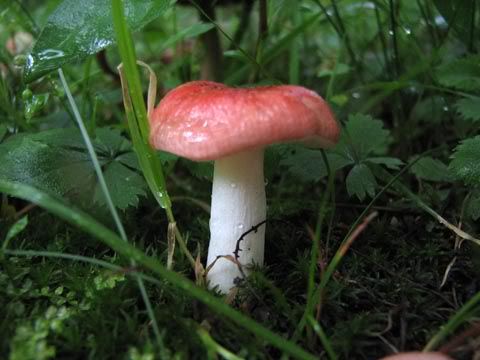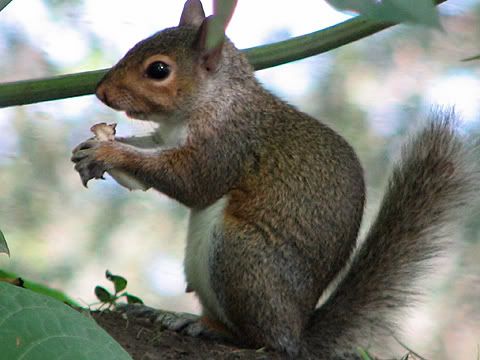365 Urban Species. #205: The Sickener

Photos by cottonmanifesto. Location: Under 150 year old red oaks in the Riverway, Boston and Brookline.
Urban species #205: The Sickener Russula emetica
This mushroom belongs to a group of colorful fruiting bodies of mycorrhizal fungi collectively known as Russulas. These mushrooms are easy to identify to the genus level, but very difficult to identify to species. The genus is characterized by white, chalky flesh in the stalk and gills. Their caps are usually colorful, some species purple, some green, many reddish. One of the red species is well enough known to have a common name: the sickener. Russulas are controversial among wild mushroom-eaters--some consider all of them to be poisonous, some consider all of them edible, except one. The sickener causes the eater to vomit--a merciful fate considering the alternatives some other mushrooms offer. The sickener is known to occur in Europe, but it may or may not be one of the red-capped Russulas in North America. Further molecular studies will tell us which species are unique to each continent, and which may occur worldwide.
Russulas are common mushrooms in New England woods. Because they are mycorrhizal, they occur only in areas where trees (usually oaks) have had their roots in the soil for many years. Urban trees are short-lived creatures, scraping out a living in polluted, compacted, acid soils, and mycorrhizal mushrooms are rare in cities. However, great city parks, with acres of wilderness area, can support surprising amounts of biodiversity. Russulas are favored food items of gray squirrels, and slugs--presumably these animals don't suffer the same effects that humans do when eating the sickener.
